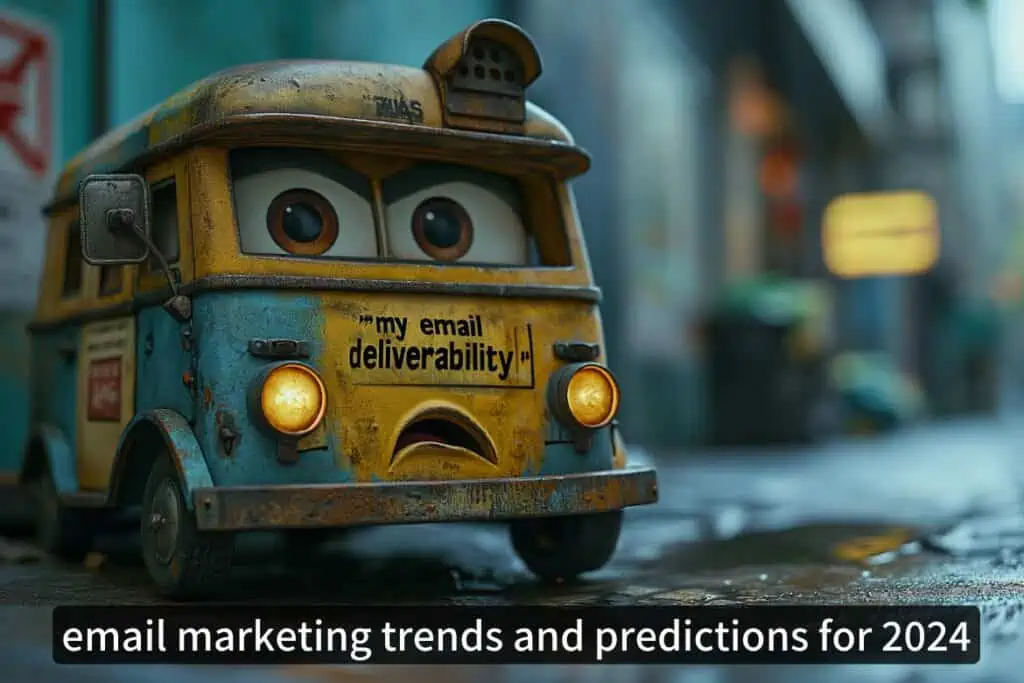One of the known email marketing best practices is to stop emailing inactive subscribers to avoid deliverability issues. is there another way?
תוכן עניינים
Email marketing has established best practices over the years. One perception is that it’s necessary to stop sending emails to unengaged recipients. The main argument is that continuing to send emails to inactive recipients can cause deliverability issues. This perception is based on a Sunsetting strategy. It involves trying to re-engage unengaged recipients through re-engagement campaigns. If these efforts fail, the next step is to remove them from the mailing list. This perception has been promoted by mailing systems to protect their systems. However, many email senders don’t understand or implement basic email deliverability violations. While the danger of deliverability issues shouldn’t be ignored, deleting unengaged recipients may not be their top concern. Is there another way?
Monty Python’s “Dead Parrot” sketch
During a podcast interview with Dela Quist, the co-founder and advisor of Alchemy Worx, the world’s largest email marketing agency with over 100 employees across four continents, Dela suggests a different, more sophisticated approach (which certainly is not suitable for every marketer) to look at inactive recipients. “I remember in 2008, I was speaking at a SilverPop conference” (now Acoustic), Dela tells me. “I enjoy entertaining when I speak, and I quoted the parrot sketch from Monty Python and played the video that everyone loves and everyone laughed. I said: Do you understand? It’s exactly the same in email marketing. Inactive recipients are dead. These addresses are dead. You are idiots if you send emails to them. Everyone applauded me, and not only did they applaud, there was unanimous agreement on the subject. I even said, jokingly, hey, guess what? If you do this, you improve your email open rates because you’re not sending emails to unresponsive people, so it’s a cheap way to look good.”
I decided to prove to them that they were idiots
The cause of my transformation was a customer of ours, a very large television station in Britain, with a very large email list of several million, who persistently sent emails to the inactive file. They did not agree to receive any advice from us to act according to the conventional wisdom – not to communicate with inactive customers. I decided to prove to them that they were idiots, continues Dela. What I did was take the list and divided it into three buckets: Bucket number one – did not open emails in the last 12 months. Bucket number two – opened emails in the last 12 months. Bucket number three was an empty bucket. To prove them wrong: I continued to send emails as they wanted, each time a non-active recipient became active, I moved them from bucket number one (inactive) to bucket number two (active) and anyone who left bucket number two, I placed them in the empty bucket, and thus managed to track the three buckets for four years.
Listen to the podcast
Open / Unsubscribe Rate
My client received about 2%-3% consistent opening from the inactive file during the trial period (four years). Customers who did not open an email for three years suddenly returned to activity. This was the beginning of my understanding of the behavior of inactive recipients, continues Dela Quist. I can say that the effectiveness of this diminishes over time and becomes less good after two to three years. I added a measure that examined the ratio between email opening and removal from the mailings. If the opening-to-unsubscribe ratio exceeds 50% and approaches the 1 area, it means that this list is very inefficient, because those who open emails do so only to remove themselves from the list, and this is also the more dangerous area in terms of deliverability.
instead of acquisition, improve your email marketing
“I have, says Dela Quist, probably the only and best research on the value of inactive recipients and how they can add value over time. I stopped looking at things like revenue per email sent (RPE) or open rates for these lists. I started checking how many new people I managed to reactivate and how much it would cost my clients to acquire those same customers through another channel. And here’s the irony: in every normal email marketing plan, almost 50%-70% of the recipient file seems inactive. Many marketers resort to buying and targeting audiences through paid channels to continually grow their active file. They pay significant amounts of money to Google, Facebook, Twitter, TikTok, and others to target customers who already have their email address (in the inactive list), but they refrain from sending them emails.”
I wanted to prove to my clients that they are wrong and I failed. In fact, no one has ever proved that this idea is wrong – unless they do something stupid. “The dialogue needs to continue,” says Dela Quist.
If you start with a clean list of people who have opted-in, not a purchased list but people who have joined voluntarily with clear consent to receive emails and manage the audiences as needed (he elaborates on this later) and do not stop sending newsletters for a year and then suddenly return to sending emails, it is safe to continue emailing the inactive file. In fact, it is not a file of inactive people, but a segment of people who respond at a lower rate. But when they respond, they immediately move from a low value to a very high value. Because now they know they are active, and we know what they have done behaviorally.
Audience Management
In every healthy email list, there are people who appear inactive but are moments away from becoming active, and active people who will soon become inactive. It’s not that we have a list of good and less good people, but rather that people are fluctuating in different situations throughout the buyer journey. Marketers focus on active customers based on the data they see in the email system, and as a result, active customers receive most of the emails at a high frequency. Email systems only show part of the picture. Often, people who don’t open emails will open them later, sometimes many months later. People who don’t open emails may visit the website (very common for well-known brands), they may visit a physical store, they may delete the email, report it as spam, or simply ignore it.
The dictionary definition of ignoring is a conscious choice not to take action (to ignore). Ignoring requires the human brain to use cognitive abilities at the highest level, says Dela Quist, giving the example of billboards or TV commercials. Ignoring emails requires recipients to exercise judgment in deciding whether to ignore. According to him, this is how the principle of building brands through recurring and varied advertising works. If we take this to the world of email marketing and examine two brands, one sending emails once a month and the other twice a week, and test recall among the recipients of the mailings, customers will always remember the brand that emailed them more. Just as with television advertising, the effectiveness of email marketing is achieved by increasing exposure (Reach) and increasing the frequency of exposure (Frequency) when the sender’s name (or brand name) and headlines function within the inbox like SMS or “billboards” in the inbox.
#DBS – Don’t Be Stupid
Dela Quist has a dual-meaning hashtag that he uses a lot. The hashtag DBS# has two meanings: Don’t Be Stupid or Do Be Smart. In order to successfully act on Dela’s recommendation – not to delete inactive subscribers and continue to email them – without running into deliverability issues along the way, a lot of data work and segmentation needs to be done behind the scenes over time, and this is something that most marketers simply don’t do.
Further reading
The website of Alchemy Worx, the world’s largest email marketing agency
Inactive Subscribers are Still Valuable Customers, MailChimp

Sella Yoffe
Email Deliverability & Email Marketing Expert
working with global email senders, startups, and ESPs to improve their deliverability and email authentication
Podcast host & Blogger @ CRM.BUZZ & EmailGeeks.Show





